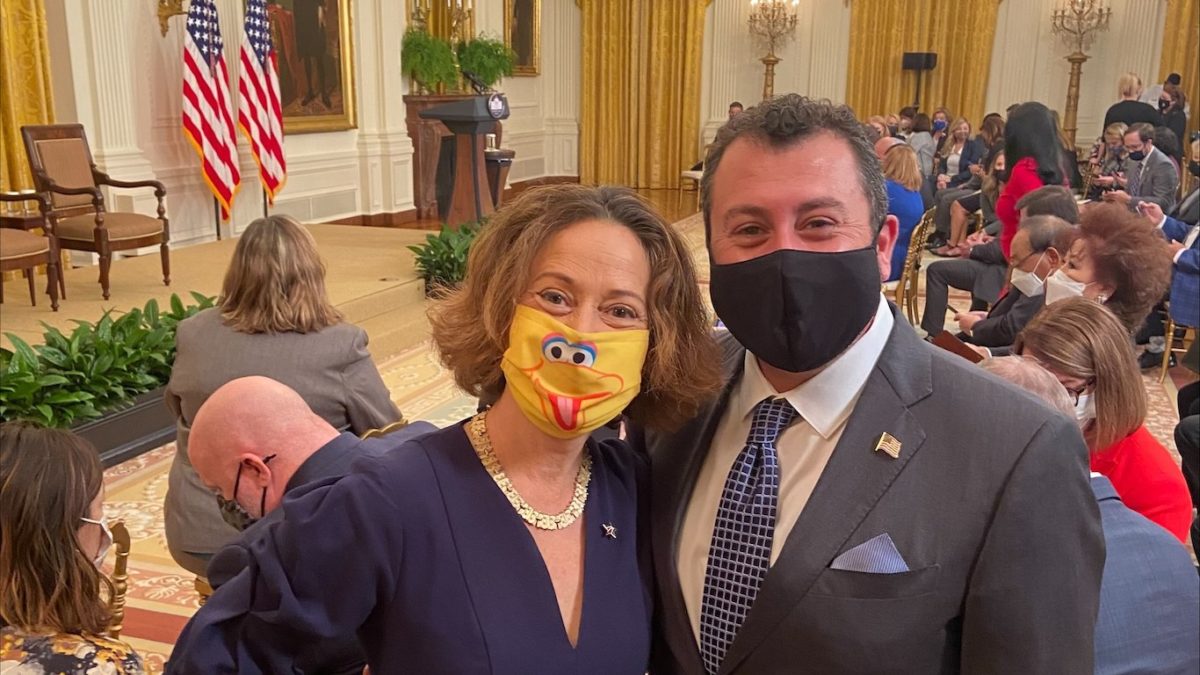Arriving at the last mile of care

I’ve been among the one in five, and at some time in their lives, most people will become part of this growing population of Americans who are unpaid family caregivers. This reality has been a driving force in my journey with CareLinx, from the time I built the company 11 years ago to today as my team works in concert with our Sharecare colleagues.
The first time my family and I became caregivers was when my sister was diagnosed with multiple sclerosis. At one point, the condition took her sight and led to her becoming quadriplegic for several years early in her life. Around the same time, my uncle, who was a father figure to us both, was diagnosed with amyotrophic lateral sclerosis (ALS), for which he required 24-hour care. I made the decision to leave London, where I lived and worked in investment banking, and return home to San Francisco, which allowed me to work with my family as a team to navigate their care while continuing my career at a nearby hedge fund. Even with our combined support, it was incredibly hard for all of us.
This experience with my family inspired my calling to fix the gap in care where it’s needed most: at home. As the healthcare industry began to transition from fee-for-service to a value-based care payment model, I was convinced that care delivery had to move into the home, which is both the lowest-cost care setting and the place where patients most want to be. I witnessed firsthand what data shows clearly – there simply are not enough clinicians to support the growing needs of an aging population. Combined with the fact that the majority of healthcare is consumed in the last 10 years of life, this presents a dire need. I realized early on that if we could connect tech-enabled, in-home care providers with remote clinical teams, we could improve outcomes and reduce costs by decreasing acute care and emergency department (ED) utilization. At the same time, we could address a need for higher wages, faster pay, and greater schedule flexibility for care providers – effectively appealing to some of healthcare’s scarcest, yet critical resources with attractive opportunities.
That’s why I created CareLinx to be the solution I wished my family and so many others had. My team and I had a vision to aggregate the scarce supply of clinicians and care providers who could address the needs of patients with chronic conditions in their homes – from light dependency for tasks such as meal prep and household chores to clinical support – and make them accessible through an on-demand platform. Initially, some of my colleagues thought I was crazy to leave a successful career in investing for what was just an idea and a passion; however, between my own experience and data that illustrated an increasing demand versus a limited supply of care for an aging population, it wasn’t hard for them to see the signs pointing toward tremendous growth in this market. Some of them believed in our mission so much that they provided the initial capital to launch CareLinx in 2011.
Fast forward more than 10 years – we have aggregated a nationwide network of more than 450,000 tech-enabled, in-home care providers working closely with several of the largest payors and providers in the country. The COVID-19 pandemic rapidly pushed healthcare delivery into the home as seniors and patients with chronic conditions adopted telehealth and further embraced in-home care services to minimize risk of exposure. As we were achieving rapid growth, we had the opportunity to join Sharecare to complete a connection that we set out to make between the bedside, the home, and everywhere in between. As care delivery becomes decentralized and adults seek to age in place, Sharecare and CareLinx amplify the clinician’s reach into patients’ homes. In the home, we have a 360-degree view of social determinants of health that the doctor or nurse typically cannot see, such as fall risk, poor access to nutrition, substance abuse, isolation, and so much more. With our data analytics capabilities and tech assets, we now can meet those needs precisely to close healthcare gaps with solutions such as high-touch in-home care, Sharecare’s digital therapeutic programs, and virtual care, to name a few examples. As a result, we’re not only reducing high-cost episodic care and hospitalizations, but we’re also empowering people to live longer and healthier with the right support at their fingertips. And with more than 1.5 million patients with access to CareLinx by Sharecare as a health plan benefit, we are poised to achieve significant scale.
Looking ahead, Jeff, my colleagues, and I see immense potential for what CareLinx will achieve as part of Sharecare with invaluable resources like our new clinical advisory board, a growing ecosystem of digitally enabled care solutions, unmatched health and well-being datasets, and world-class partners that range from employers, payors, provider network leaders, and nonprofits like the Elizabeth Dole Foundation and Blue Star Families (I’m joined by their CEO, Kathy Roth-Douquet in the photo above at the White House Hidden Helpers launch event).
In less than a year’s time, we’ve made significant headway on expanding and building new offerings, piloting innovative community health models, and enabling the transition toward value-based care – all while achieving monumental growth with our legacy business. We are excited to share these new developments as they unfold and hope you’ll continue to follow our evolution. In the meantime, as our greater industry keeps advancing toward the last mile of care, I’m proud to say we’ve already arrived.